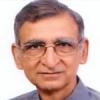Political tendencies not only distort and ‘present the past’ to suit their political agenda; they can go to any extent to even lie about the events and their interpretation. ‘Facts are sacred; opinions are free’ should have been the dictum for all those commenting on them, but as they say for the likes of Modi, ‘all is fair in love and war’. To promote his personal ambitions and to enhance the impact of his political agenda, he has been crossing all limits. At one level in order to glorify Sardar Patel; he is undermining Jawaharlal Nehru, and is trying to create a binary between them. For him this serves two purposes. One, as ‘Modi parivar’ never participated in freedom movement they do look for an icon who was a part of freedom moment, and so have picked up Patel and are trying to appropriate him, despite the fact that Patel was very clear about the role of Modi’s ideological parents (Hindu Mahasabha-RSS), in the murder of his mentor, Mahatma Gandhi, “… as [a] result of the activities of these two bodies [the RSS and the Hindu Mahasabha], particularly the former, an atmosphere was created in the country in which such a ghastly tragedy became possible…The activities of the RSS constituted a clear threat to the existence of the Government and the State.”
As far as tragic partition of the country is concerned there are so many scholarly works, which not only tell us the dynamics of India’s partition, but also throw a light on the complexity of the whole process. Yes, it is true that the complicated dynamics is so vast that many can pick up as per their own narrow picture. For the followers of Jinnah it was Congress which was responsible for India’s partition, and Modi seems to be in the same boat while putting the blame of partition on Congress and particularly on Nehru. There are three core reasons for partition tragedy. The biggest reason has been the British policy of ‘Divides and rule’. British knew that India’s major leadership is tilted towards socialism and may ally with Russian socialist block in international affairs. In pursuance of their imperialist vision they did want to cultivate a country, which can remain their subservient nation, that’s precisely the role Pakistan played in international affairs. The major factor assisting this British goal had been the two nation theory, originally propounded by Savarakar, the ideological founder of Modi ideology. The third reason had been Jinnah’s assertion that ‘Muslims are a separate nation ‘, and so we want Pakistan.
Lohia in his major book, "Guilty Men of India's Partition", writes: "… one of the forces that partitioned the country was precisely this Hindu fanaticism… Those who have shouted loudest about Akhand Bharat, the present Jana Sangh (previous avatar of BJP, added) and its predecessors of the curiously un-Hindu spirit of Hinduism, have helped Britain and the Muslim League partition the country. They did nothing whatsoever to bring the Muslim close to the Hindu within a single nation. They did almost everything to estrange them from each other. Such estrangement is the root cause of partition…”
Similarly Jinnah had become more and more rigid about his demand for separate Pakistan over a period of time. Once Nehru stated that they are not bound by Cabinet mission plan, Jinnah rigidly adhered to the demand for Pakistan.
At administrative level while Gandhi; by the time these machinations were being implemented by the British; was more involved on the ground, dousing the Hindu Muslim violence, leaving the issue in the hands of Nehru and Patel, his most trusted followers. Maulana Abul Kalam Azad in his seminal "India Wins Freedom", points out that it was Sardar Patel who was the first major Congress leader to have supported the British plan for India's partition. Maulana himself never reconciled to the plan of partition, while Gandhi was the last person to have given a quiet acceptance to this, hoping that it will be a reversible process. Modi’s own colleague in the Central Cabinet, MJ Akbar, in his biography of Nehru (1988) "Nehru - The Making of India" says "Sardar Vallabhbhai Patel, the strong man of India, had accepted the idea of partition even before Pundit Jawaharlal Nehru, the romantic." (page 406)
One recalls that Jaswant Singh, Modi’s party’s major leader in his book (‘Jinnah Partition Independence’) did point out about the role of Patel in acceding to the pressure of circumstances and accepting the partition. It was due to this that Modi, the then Chief minister of Gujarat, banned this book in his state.
About Kashmir imbroglio, lesser said the better. It was the creation of historical circumstances in which a Muslim majority princely state did not want to merge into Pakistan. In the face of attacks of groups of tribal, supported by Pakistan army, Maharaja Harisingh sought the help of India to save the situation. It was Sheikh Abdullah who was most insistent on help from India. Patel and Nehru were on the same page on this matter. Patel was even willing for a trade off Kashmir valley. Rajmohan Gandhi in his biography "Patel: A Life", tells us that Patel was thinking of making an ideal bargain: if Jinnah lets India have Junagadh and Hyderabad, Patel would not object to Kashmir acceding to Pakistan. He cites a speech by Patel at Bahauddin College in Junagadh, following the latter's merger with India, in which he said: "We would agree to Kashmir if they agreed to Hyderabad." (Pages 407-8, 438)
The final word on Patel-Nehru relations comes from none other than Father of the nation, Gandhi. While speaking to Indian Express he said, “Broadly speaking Nehru and Patel stood together on most issues, including Kashmir.” Modi is trying to construct this lie and keeps repeating it on most occasions as, despite being a lie it suits him ideologically.
(Some references courtesy Sudheendra Kulkarni, Modi's Dislike For Nehru Cannot Obliterate The Facts)







Comments
Add new comment